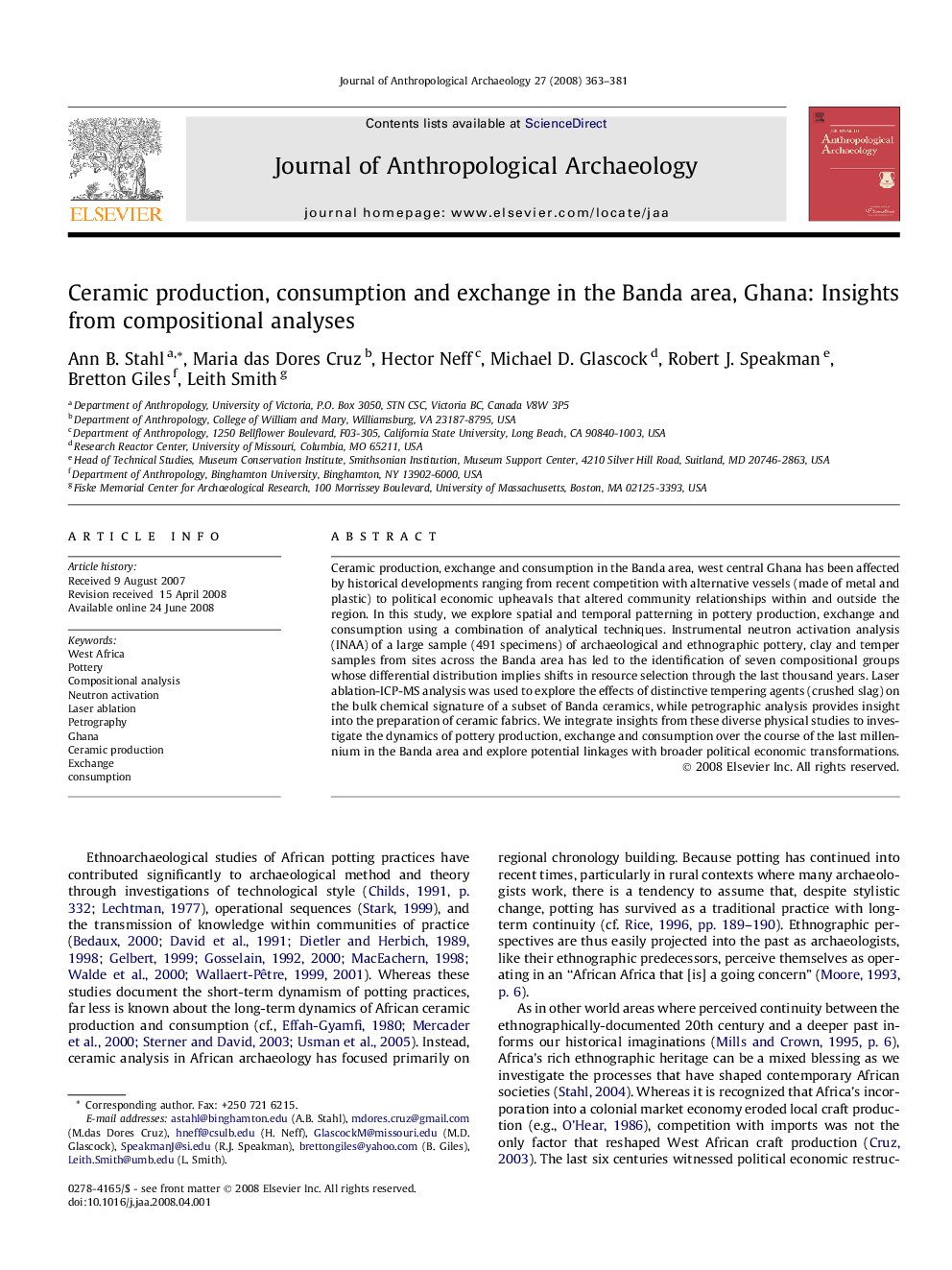| Article ID | Journal | Published Year | Pages | File Type |
|---|---|---|---|---|
| 1035192 | Journal of Anthropological Archaeology | 2008 | 19 Pages |
Ceramic production, exchange and consumption in the Banda area, west central Ghana has been affected by historical developments ranging from recent competition with alternative vessels (made of metal and plastic) to political economic upheavals that altered community relationships within and outside the region. In this study, we explore spatial and temporal patterning in pottery production, exchange and consumption using a combination of analytical techniques. Instrumental neutron activation analysis (INAA) of a large sample (491 specimens) of archaeological and ethnographic pottery, clay and temper samples from sites across the Banda area has led to the identification of seven compositional groups whose differential distribution implies shifts in resource selection through the last thousand years. Laser ablation-ICP-MS analysis was used to explore the effects of distinctive tempering agents (crushed slag) on the bulk chemical signature of a subset of Banda ceramics, while petrographic analysis provides insight into the preparation of ceramic fabrics. We integrate insights from these diverse physical studies to investigate the dynamics of pottery production, exchange and consumption over the course of the last millennium in the Banda area and explore potential linkages with broader political economic transformations.
